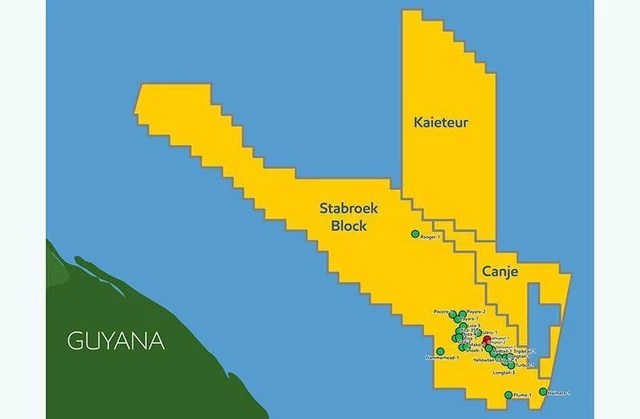Despite predictions that oil demand will peak in the next decade, international energy companies have not stopped investing in the exploration and production of this fossil fuel.
The world’s last big oil “tank”?
One area that is surprising the world is the Guyana-Suriname Basin. A series of recent ExxonMobil discoveries in the area have attracted the attention of many other majors after unsatisfactory exploratory drilling results in the 1960s-1970s caused it to be ignored by energy companies.
But the recent discovery of more than 11 billion barrels of exploitable oil in the Stabroek block off the coast of Guyana shows that the US Geological Survey (USGS) has underestimated the oil resources in the basin. There are indications that this is the world’s last major offshore oil storage.
In a May 2001 report, the USGS estimated the Guyana-Suriname basin to hold about 15 billion barrels of oil. Findings since 2020 suggest this is much lower than the actual potential in this sedimentary basin. Exxon has discovered oil reserves of at least 11 billion barrels of exploitable oil in the Stabroek block in the nearby block 58, which is believed to have reserves of up to 6.5 billion barrels.
The discoveries at these two blocks alone produce an estimated 28.5 billion barrels of oil out of a total of 30 blocks across the Guyana-Surinam basin.
Exploration drilling operations are underway at breakneck speed in Guyana, where the government has offered very favorable terms to Exxon, the leader of mining in the Stabroek block. Exxon currently holds 45% of the operating interest while partners Hess and CNOOC hold the remaining 30 and 25% respectively. They have carried out 30 exploration operations and are monitoring developments in mining activity in the area.
In addition to the Stabroesk block with more than 11 billion barrels of exploitable oil, Exxon’s Liza oil field here is also pumping more than 360,000 barrels of oil per day to the market, much higher than the stated capacity of 340,000 barrels.
Exxon is also planning to expand production at the Stabroek block with the Payara and Yellowtail fields set to start operations in 2023 and 2025, adding 470,000 bpd. This will help Exxon pump at least 800,000 barrels of oil per day from Guyana in 2025.
The indispensable “piece of cake” of the energy giants
Output from the Stabroek block will continue to increase beyond 2030. This October, Exxon announced the Sailfin-1 and Yarrow-1 discoveries and continued to ramp up exploratory drilling. The group aims to complete 25 wells by the end of June 2023, followed by another 35 wells when the current plan is complete.
Experts predict Guyana’s oil production will hit 1.2 million bpd by 2027 – turning the impoverished British colony past Colombia as the third-largest oil producer in Latin America and the Caribbean. Consulting firm Rystad Energy predicts Guyana’s oil production will reach 1.7 million bpd by 2035 – surpassing US offshore production and becoming the world’s fourth-largest offshore oil producer.
Investments will be continuously poured into Guyana with around 800,000 people participating in these projects. Among the latest companies wanting a piece of Guyana’s pie, British conglomerate BP has won a contract to sell the petrol produced from Guyana’s Stabroek batch.
Investments are constantly pouring into Guyana, turning the impoverished country into an oil-exporting powerhouse.
Guyana is one of the lowest-cost places for energy companies to operate. Exxon Corporation announced that the 120,000 bpd Liza Destiny Floating Production Storage and Offloading (FPSO) vessel is pumping oil at a breakeven price of $35 per barrel. This figure has been reduced to 25 USD/barrel for the second FPSO called Liza Unity with a capacity of 220,000 b/d, put into operation from February 2022.
The world’s largest energy company expects to reach 1 million bpd of output there by 2030. Overall, the breakeven price for oil production offshore Guyana is $30-35 per barrel and will fall further as upgraded infrastructure.
The medium sweet and light oils found in Guyana are relatively low cost to extract and refine, especially when compared to the sour and heavy oils commonly found in South America. This further increases the attractiveness of investing in Guyana.
For these reasons, Guyana’s upcoming oil auctions will attract considerable attention, especially as the country is topping the charts in terms of global oil discoveries since its inception. In fact, in addition to the Stabroek block with 11 billion barrels of Exxon oil extracted, it is believed that another 25 billion barrels are waiting to be discovered.
With Rydstad predicting Guyana will pump 1.7 million barrels of oil per day by 2035, the impoverished South American nation will emerge as one of the world’s five largest oil producers.
Source: CafeF
Source: Vietnam Insider


